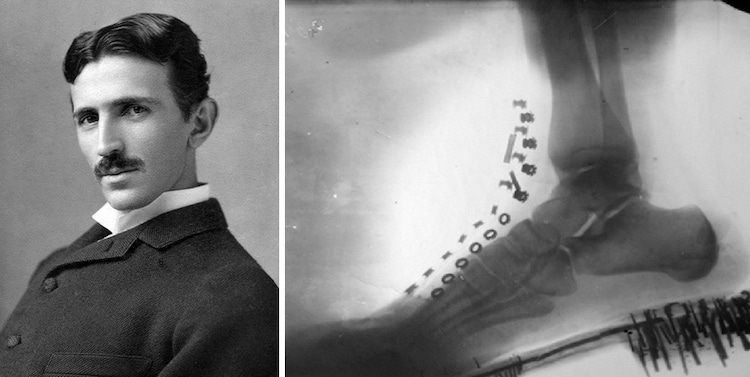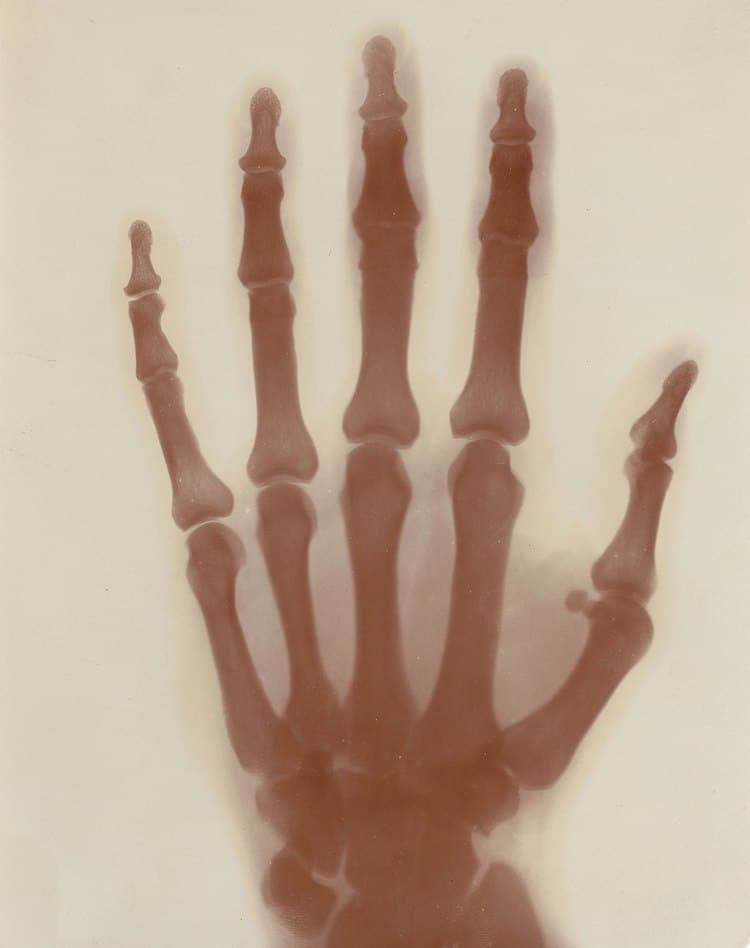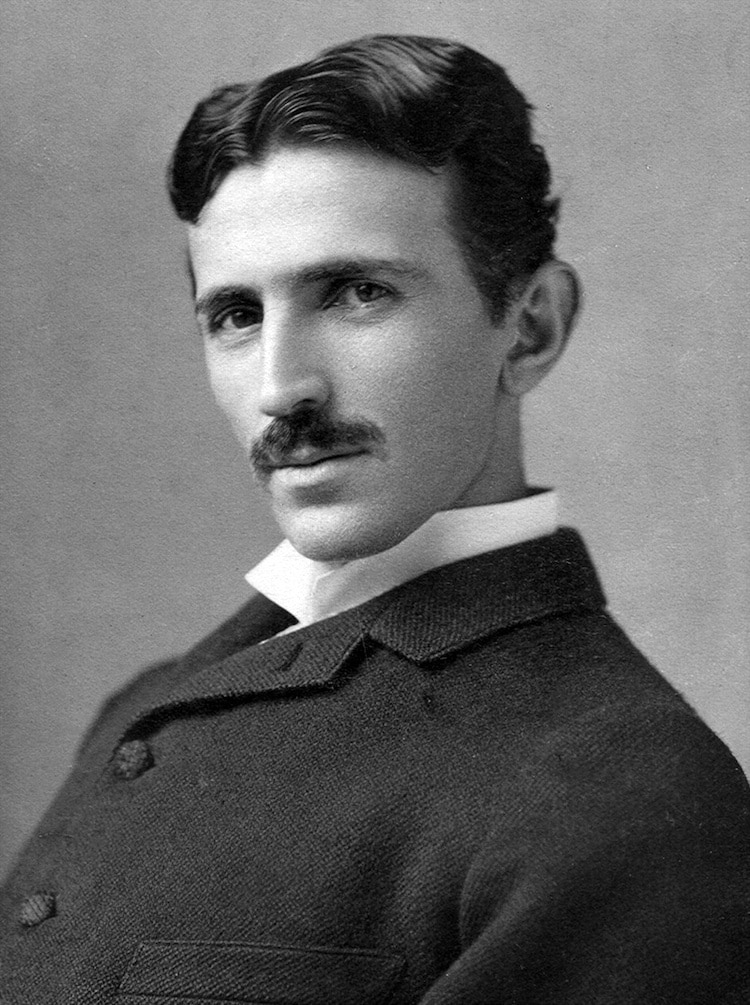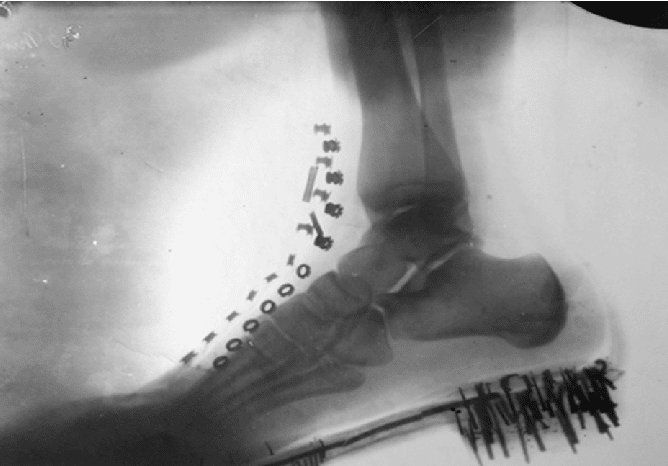
Left: Martin van Meytes, Public domain, via Wikimedia Commons / Right: via Radiographics
Inventor Nikola Tesla is famous for his work with electricity and radio. Holding over 300 patents, the Serbian-American inventor was prolific, but not all of his experiments were successful or widely known. For instance, most people don't associate Tesla with the x-ray, but he began experimenting with the technology in 1894.
Tesla started playing with radiation energy toward the end of the 19th century when he noticed damaged film from previous experiments. The following year, German physics professor Wilhelm Röntgen published a report about x-rays. To this day, the discovery of x-rays is associated with Röntgen, but Tesla was not far behind. If a fire hadn't ravaged his studio in 1895 and destroyed all of his equipment, he may have even beat Röntgen to the punch.
Still, there were no hard feelings between the men. In fact, when Röntgen's study came out, Tesla sent him a letter of congratulations and included some of the images that he'd been making. In return, Röntgen sent him high praise for his work.
Tesla continued to push himself to learn more about x-rays. He did his own experiments and created a high-energy vacuum tube that worked from the output of a Tesla coil—his most famous invention. Calling them “shadowgraphs,” Tesla took them using the easiest model he could find—himself. X-rays of both his foot (with the metal pieces of his shoe still visible) and his hand are a great testament to his work.

X-ray of Tesla's left hand, c. 1896. (Photo: Nikola Tesla, Public domain, via Wikimedia Commons)
But Tesla's contribution to the world of radiology didn't end there. He quickly pointed out the beneficial uses of x-rays in the medical field. Noting that x-rays imaged denser bodies differently than opaque bodies, he described how the technology could be used to find foreign objects in the body or even spot lung disease.
He was also one of the first scientists to describe the cautionary effects of working with x-rays and radiation. He noted changes to the skin, pain, swelling, and even hair loss. He incorrectly attributed this to the ozone and nitrous acid generated by the rays rather than the rays themselves. But this didn't stop him from trying to enact some early safety measures against these negative effects.
At the same time that he continued improving the x-ray, he understood that distance and time were factors in saving the human body from their harmful effects. In fact, he even tried making an aluminum shield to give a barrier of protection.
Incredibly, for all of his groundbreaking work, Tesla was plagued by financial troubles. Evicted from many New York City hotels for running up high bills he couldn't pay, he eventually died alone in the Hotel New Yorker. He was 86 years old.
Today his legacy remains strong thanks to his many contributions to the scientific world and the impact of the technologies he created.
Nikola Tesla was a prolific inventor with over 300 patents.

Nikola Tesla c. 1890. (Photo: Martin van Meytes, Public domain, via Wikimedia Commons)
He experimented with early x-ray technology, noting its medical benefits and hazards.

X-ray of Nikola Tesla's foot, 1896. (Photo: via Radiographics)
Related Articles:
Leonardo Da Vinci’s To-Do List Proves He’s a True Renaissance Man
Discover ‘Candle Clocks’: History’s Original Alarm Clocks Before Electricity
Who Is Abraham Ortelius? Learn More About the Inventor of the World’s First Atlas
Discover Daguerreotype Photography and How the Pioneering Process Is Still Used Today






















































































